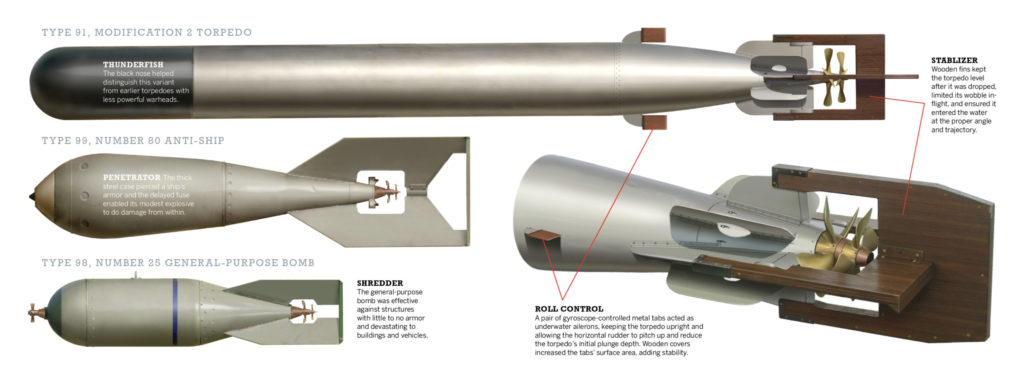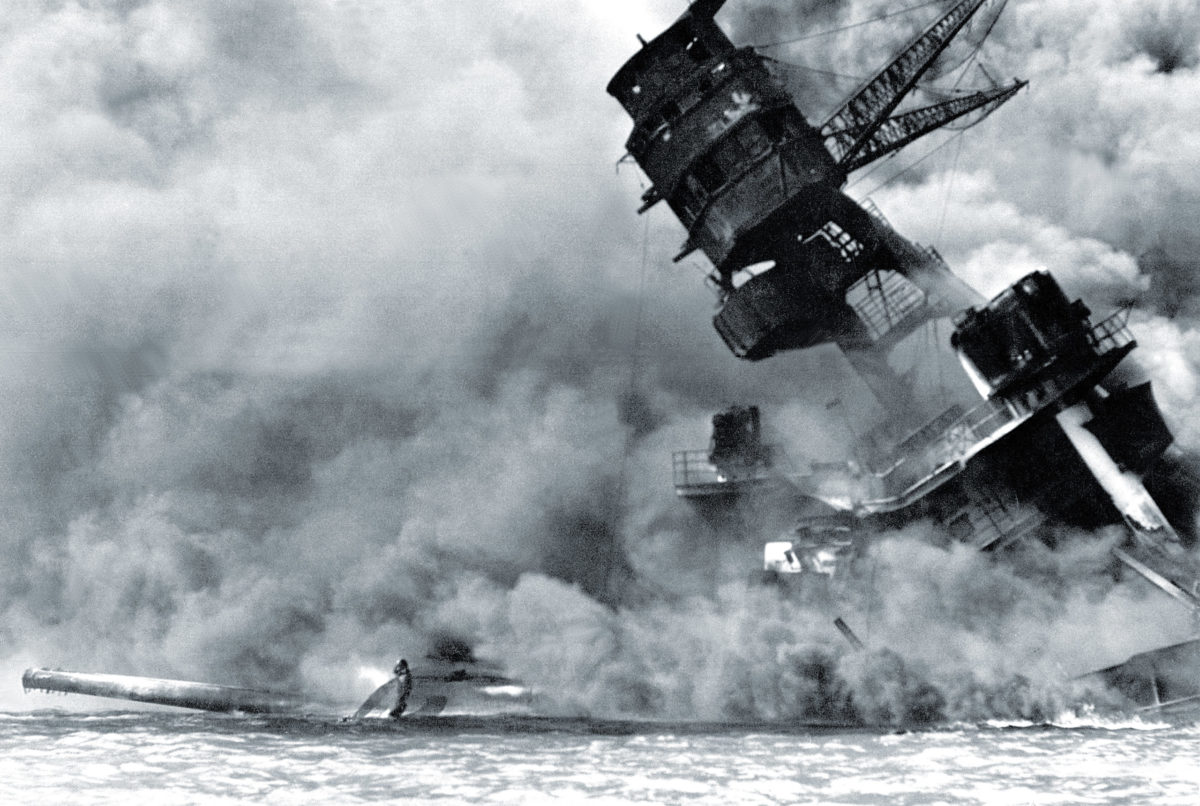For their surprise attack at Pearl Harbor, the Japanese utilized a mix of torpedoes and bombs—some specially customized for the assault. By December 1941, the Japanese had refined their “Type 91, Modification 2” torpedo to be extremely reliable. But Pearl Harbor’s shallow 45-foot waters posed a problem: when dropped, a torpedo would typically plunge at least 90 feet before rising to attack depth. After extensive testing, the Japanese attached wooden tail fins and slipped wooden sheaths over the torpedo’s side anti-roll tabs. Both additions—which increased surface area, added buoyancy, and broke away upon impact with the water—proved decisive. Torpedo planes coordinated their assault with aircraft carrying Type 99 anti-ship bombs, which were converted artillery shells. When dropped from altitude, the streamlined projectiles could pierce steel armor, penetrate through a ship’s decks, and explode. One such bomb caused the massive fatal explosion aboard the USS Arizona, killing 1,177 servicemen in seconds. To strike targets further inland, dive bombers carried the Type 98 general-purpose bomb, wreaking havoc on airfields, structures, vehicles, and parked aircraft.







